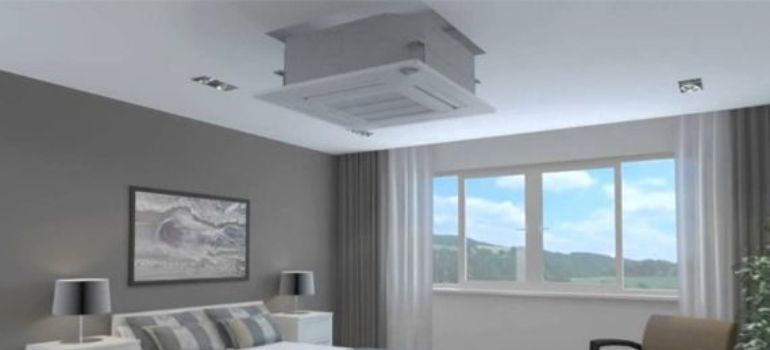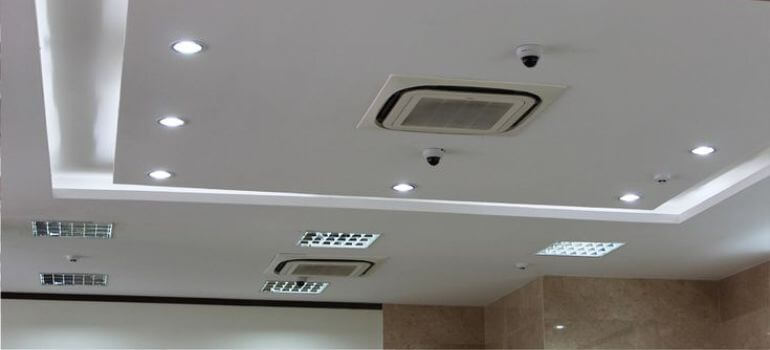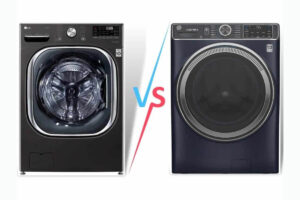Central air systems provide whole-house cooling, while window units cool single rooms. Central air tends to be more costly but offers a seamless aesthetic.
Deciding on the right cooling system for your home involves weighing both performance and energy efficiency. Central air conditioning systems, integrated into your home’s HVAC system, deliver uniform temperature control and better air filtration, ideal for larger spaces or entire homes.
They require a more significant initial investment and professional installation but result in a quieter, more convenient solution that can increase property value. On the other hand, window air conditioning units represent a more affordable, flexible option. Easily installed in a specific room, window units are perfect for targeted cooling or for homes where ductwork installation is not feasible. Both offer their own set of benefits, and the best choice largely depends on individual cooling needs, budget considerations, and home layout.
Cost And Installation

One of the primary considerations when choosing between a central air system and a window unit is the balance between cost and installation complexity. Understanding these factors can significantly influence your decision-making process and long-term satisfaction with your climate control solution. Let’s break down the initial costs and installation processes for both central air systems and window units.
Initial Cost
The upfront investment is a huge deciding factor for many homeowners. A central air system typically involves a higher initial cost, ranging significantly depending on the quality and capacity. Prices can start from a few thousand dollars and can soar, especially if ductwork needs updating or installation.
In contrast, window units offer a more budget-friendly entry point. You can find models starting as low as a few hundred dollars, making them accessible for immediate relief from the heat. Here’s a simple table to compare the initial costs:
| Type | Low-End Cost | High-End Cost |
|---|---|---|
| Central Air | $2,000 | $7,500+ |
| Window Unit | $150 | $800 |
Installation Process
The installation process is another critical factor. A central air system usually requires a professional technician due to its complexity and the necessity of precise calculations for efficient operation. The process includes assessing your home’s layout, installing the unit, and ensuring the ductwork is properly sealed for optimum efficiency. Be prepared for the process to take several days, particularly if new ductwork is needed.
Conversely, window units offer simplicity and DIY-friendly installation. Many can be installed with common household tools and a little bit of elbow grease. Follow these general steps:
- Measure your window to ensure a proper fit.
- Attach the side panels to the unit.
- Open the window, place the unit on the sill, and lower the window onto the top of the unit.
- Extend the side panels and secure the unit according to the manufacturer’s instructions.
- Plug it into an appropriate outlet, and you’re ready to cool down.
Considering both cost and installation, the choice between a window unit and central air depends on immediate needs versus long-term comfort and home value. Understanding these aspects helps in making an informed decision that balances upfront investments with ongoing benefits.
Energy Efficiency
When it comes to cooling your home, energy efficiency isn’t just a buzzword—it’s a crucial factor that impacts your comfort and your wallet. As the debate between central air systems and window units heats up, it’s important to focus on how each option weighs in when it comes to energy consumption and cooling effectiveness. Homeowners and renters alike are increasingly conscious of their energy use and its environmental and financial repercussions. Let’s explore how central air conditioning and window AC units measure up in this respect.
Energy Consumption
The question of energy consumption is the first to consider. Central air conditioning systems are designed to cool entire homes, making them inherently more energy-intensive. In contrast, window units can focus on cooling just one room at a time, leading to potentially lower overall energy use. Specifically, the Seasonal Energy Efficiency Ratio (SEER) rating is key when comparing central air to window units. Modern central air systems frequently boast higher SEER ratings, signaling greater efficiency, thanks to technological advancements.
However, it’s not just about the rating—the actual energy consumption hinges on usage patterns. For example, leveraging programmable thermostats with central air can optimize energy use, whereas improperly used window units can lead to energy drain.
Cooling Effectiveness
Cooling effectiveness is another paramount concern. Central air conditioning provides consistent temperatures throughout the home, reducing hot spots and maintaining steady comfort. This uniform cooling distribution is especially beneficial for larger homes with multiple rooms. On the flip side, window units are adept at cooling single rooms quickly and effectively, which may be suffice for smaller spaces or particular areas that require a cooler climate.
Considering cooling effectiveness, one should also assess the unit’s ability to dehumidify. Central air systems usually include built-in dehumidifiers that enhance the indoor environment’s comfort, while window units may not match this capability.
To further compare the two options, consider the size of the space and the climate. Central air might excel in larger spaces and hotter environments, whereas window units could offer a practical solution for smaller areas or milder climates.
Aesthetics And Convenience
When deciding between central air and window units for cooling your home, two critical factors to consider are the aesthetics and convenience each system offers. These elements can significantly influence your living space and daily life. Let’s delve into how each option measures up under these criteria.
Aesthetics
Central air conditioning systems are often the preferred choice for homeowners prioritizing a seamless look. Since the main components are hidden outside or in utility spaces, you won’t have bulky units interrupting your home’s interior design. Vents and registers can be designed to match your decor, offering a sleek and unobtrusive presence.
In contrast, window units can be quite noticeable. They protrude from windows and can alter the external appearance of your home. Internally, they occupy window space which might otherwise be used for natural light or fresh air, and they don’t blend as effortlessly with home decor.
Convenience
Regarding convenience, central air systems offer unparalleled ease of use. Once installed, these systems provide consistent cooling throughout your entire home with simple thermostat control. You can achieve the perfect temperature with the touch of a button, without the need to adjust multiple units.
- Automatic temperature control
- Even distribution of cool air
- Programmable settings for different times of day
Window units, on the other hand, are easy to install and remove, making them a practical choice for those who prefer a more temporary or seasonal solution. They’re also ideal for cooling specific rooms rather than the entire home, which can be more energy-efficient if your cooling needs are limited to a confined area.
- Simplified installation process
- Targeted cooling for individual rooms
- Potential energy savings if used strategically
Frequently Asked Questions On Central Air Vs Window Unit
Is It Cheaper To Run A Window Unit Or Central Ac?
Running a window unit generally costs less than operating central AC, especially for cooling individual rooms rather than an entire home.
Do Window Units Help Central Air?
Window units can supplement central air by cooling specific rooms, reducing the overall workload on the central AC system. They provide targeted relief without overextending the main unit, potentially leading to cost savings and increased efficiency.
Is Central Air More Efficient Than Ac?
Central air systems tend to be more efficient than window AC units, especially in larger homes with consistent cooling needs. They offer better energy distribution and lower long-term costs.
Is It Worth Adding Central Air To A House?
Adding central air to a house can increase comfort and property value, making it a worthwhile investment for many homeowners.
Conclusion
Deciding between central air and window units depends on your needs. Central systems offer seamless cooling and increased home value. Window units give flexibility and cost savings. Evaluate your space, budget, and preferences for the best choice. Enjoy a cooler home environment, whichever you select.




